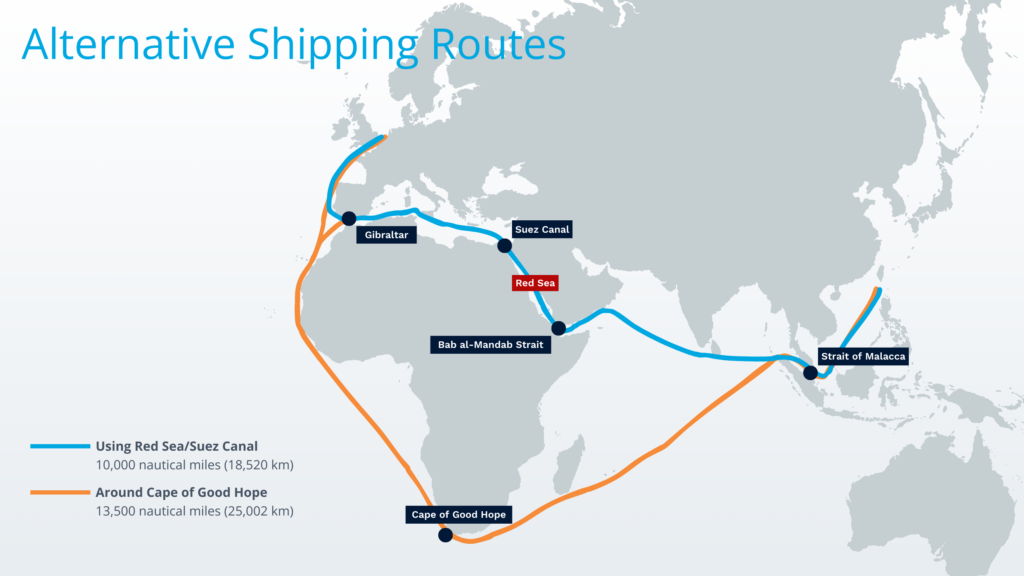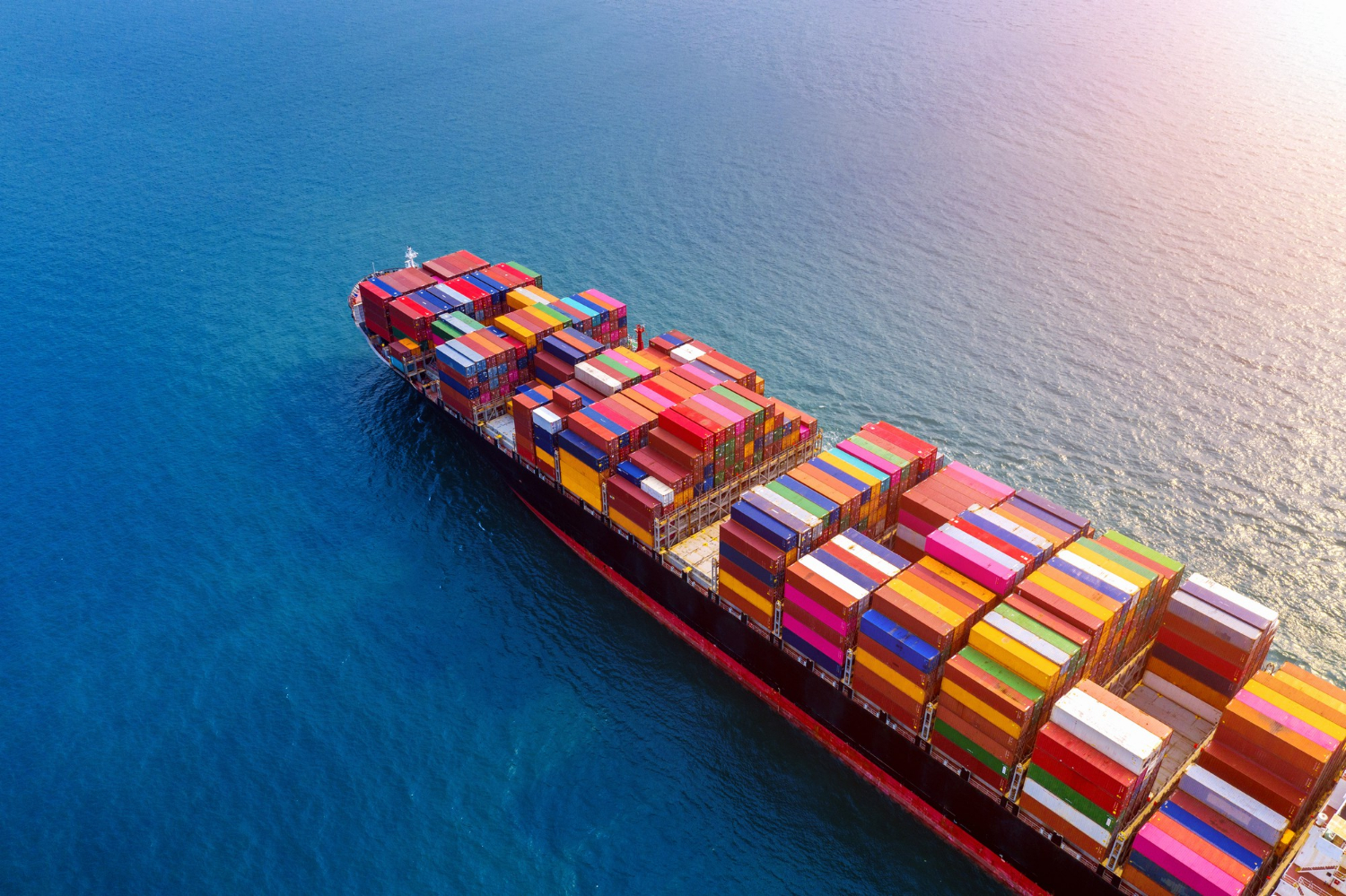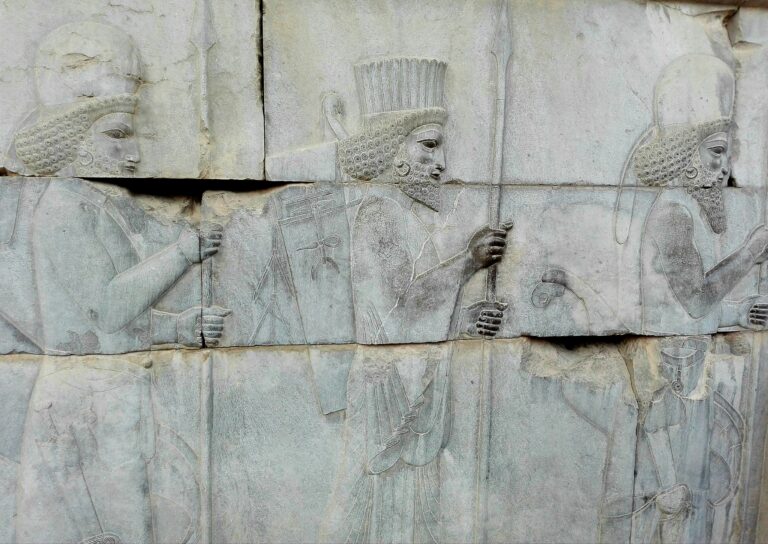Ongoing attacks in the Red Sea by well-trained non-state actors from the Arabian Peninsula, linked to conflicts in the Levant and involving Iranian-backed Houthis in Yemen, have disrupted shipping. The United States plans military action, but the outcome is uncertain. Historical examples suggest the blockade may not have a lasting impact. Whether through a slowdown in attacks or Western intervention, the Red Sea corridor is unlikely to face prolonged issues.
The Red Sea, spanning from the Suez Canal to the Bab al-Mandab Strait, is arguably the most critical naval corridor on the planet. It handles around 8.25 million TEU and nearly 30 percent of global shipping, making it a vital part of the global economy, facilitating exports from the East Asian manufacturing hubs to Europe. However, since November, it has been subjected to continuous attacks from a well-trained and equipped non-state actor on the southern tip of the Arabian Peninsula, which led to halts in traffic and severely elongated global supply lines. And yet, this is a conflict that did not start in Yemen, from which shores it manifested, but rather in a gruesome war in the Levant.
When Hamas executed its well-planned, brutal, and methodical infiltration into Israel on 7th October, which resulted in hundreds of kidnappings and as many as 1,200 deaths, it sent shockwaves across the Middle East. The regional security architecture is both complex and unstable, as a convoluted network of non-state actors, foreign powers, regional actors, and religious and political movements constitutes a fertile ground for hostilities and violence. Consequently, Israel’s overpowering response to Hamas’s attack, in the form of a siege and subsequent invasion of Gaza, galvanized Hamas’s principal ally and supporter — Iran. While the extent of Iran’s support to Hamas in the execution of the attack remains unclear, they indeed committed to supporting them in its aftermath. Initially, their contribution to the conflict took the form of attacks via its proxy in Lebanon, Hezbollah.
However, Iran’s capability to indirectly deliver harm not only to Israel but also to its allies extends to the other side of the Middle East, the very tip of the Arabian Peninsula. There, Tehran’s traditional allies—the Houthis—well-trained, organized, and armed, proclaimed war against Israel and started attacking shipping in the Red Sea under the guise of solidarity with Palestine. The Houthis, a political and religious movement occupying the north of war-torn Yemen, are the main actors in the Yemen Civil War, often dubbed as the forgotten war. The Houthis, who belong to the Shia sect of Islam and are more aligned with Iran, account for around 35 percent of Yemen’s population and have a long tradition of opposing the central authority. As of 2014, they have been in a state of rebellion against the government and are in complete control of Yemen’s capital and western coast.
The prolonged conflict is not only a civil strife between the Shia and Sunni parts of Yemen but also between two regional powers, Iran and Saudi Arabia. In 2015, Saudi Arabia and a coalition of Middle Eastern nations launched an intervention with limited results. Meanwhile, the Houthis proved to be a resilient and well-organized force, capable of deploying complex, long-range weaponry, all of which has been either designed or supplied by Iran. In that context, they are known to launch attacks deep into Saudi Arabia with ballistic missiles and drones, striking key energy infrastructures. They are also well versed in hiding their launch sites, and most of their rocket arsenal is highly mobile, being able to move out of secret storages and fire within short time frames before disappearing again. However, since the Israel-Hamas conflict, they decided to broaden their targets to include shipping in the Red Sea. And they have proved to be very effective.
Though the Houthis can make it more challenging to conduct global trade, they cannot stop it. They will probably continue with their military actions against shipping, with political and economic effects for Israel and the Western powers but are unlikely to produce any long-lasting damage.
The first strike took place on 19th November, when the Houthis launched an airborne assault with a helicopter painted in the Yemeni and Palestinian flags and seized a commercial ship traveling through the Red Sea. The ship Galaxy Leader belonged to Ray Car Carriers, a shipping company based on the Isle of Man. A shareholder in this company is Yael Ungar, an Israeli national whose husband, Abraham Ungar, is a well-known Israeli shipping businessman with a total net worth of over USD 2 billion. It seems that this connection triggered the Houthis’ seizure as the vessel did neither sail under an Israeli flag nor had Israeli citizens on board.
This attack was only the beginning. In the following month, they launched dozens of rockets and drones at ships in the Red Sea. Their spokesperson claimed that these attacks were focused on ships “in connection to Israel.” However, it seems they carried them out without much distinction, targeting numerous container shipping vessels, none of which sailed under the flag of Israel. The Houthis used a combination of drones and anti-ship missiles, but attacks were mainly ineffective as U.S. and UK ships intercepted them. Major companies, such as Maersk, Mediterranean Shipping Company, British Petroleum, CMA CGM, and Hapag-Lloyd, said they would cease further traffic to the Red Sea. This will increase the cost of a shipment from East Asia to Europe and extend the length of travel by around seven to twelve days, resulting in shipping delays and millions in damage. In a globalized economy that relies on just-in-time shipments to create products most efficiently, this delay can cause significant economic aftershocks.

Source: Dimerco
As the Houthis keep a chokehold on the Red Sea route, how the United States and the wider Western world will respond remains to be seen. The United States has recently announced that it plans a military action to stop further attacks. Meanwhile, some previous incidents may provide an insight into how this response would unfold. For one, this is not the first time that the United States has been faced with Yemen’s civil war spilling over, as in 2016, they targeted Houthi radar sites in response to a failed Houthi attack on a U.S. Navy destroyer. Furthermore, the Tanker Wars of the 1990s, when Iran attacked civilian ships during the Iraq-Iran war and the United States responded, show that to stop such attacks, kinetic action in the country of origin is required. Therefore, it is likely that the United States will form a coalition of allied Western nations to engage in a short and decisive air and naval action against Houthi sites.
However, will it work? Houthi missile systems are mobile and well-hidden, so it is likely that the Houthis can simply relocate and temporarily slow down their attacks before proceeding. Ground action on the Houthi-held territory seems unrealistic, as the United States seems unlikely to get bogged down in another Middle Eastern occupation.
With all that said, there is some historical precedent to indicate that the blockade of the Red Sea might not be as urgent as some other security matters. For one, this is not the first time the Red Sea has been closed for trade. Between 1967 and 1975, after the Six-Day War between Israel and its Arab neighbors, Israel occupied the Sinai and thus bordered the Egyptian heartland at the Suez Canal. In response, the canal between the two powers was closed for eight years until the Yom Kippur War resulted in an eventual peace settlement and Israel ending its occupation of the Sinai Peninsula. The world economy, though hurt, did handle the Suez Canal closure.
Though the Houthis can make it more challenging to conduct global trade, they cannot stop it. They will probably continue with their military actions against shipping, with political and economic effects for Israel and the Western powers, but are unlikely to produce any long-lasting damage. Shipping companies will adapt to the new shipping costs and times while waiting for the U.S. Navy and its allies to clear the sea for transport again.
With time, the Houthis may cease their attacks altogether — not because of any Western response, but due to changes in Tehran’s policy. For now, Iran is willing to send the necessary material support to Hezbollah and the Houthis to pressure Israel and its Western allies. However, should the war in Gaza subside, Iran could cut their losses and decide that further material expenditure in terms of rockets and drones would not produce enough economic and political impacts.
Whatever the result — an eventual slowdown of attacks or a Western intervention — it is unlikely that this blockade would pose a long-term issue for the Red Sea corridor.




